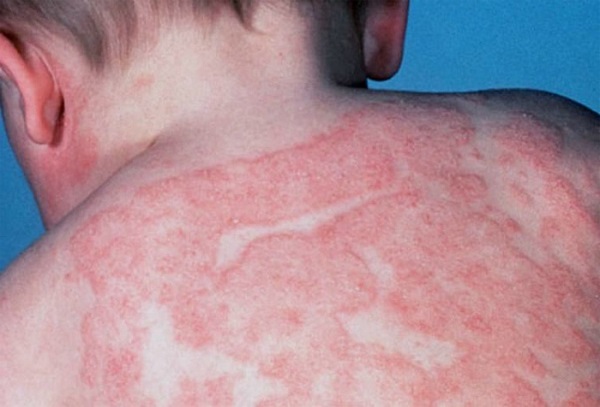Photosensitive Psoriasis and Psoriasis in Plaques!
Photosensitive psoriasis.
Psoriasis is worse in areas exposed to the sun as the face, neck, hands and forearms, this is known as photosensitive psoriasis, a type of plaque psoriasis.
 |
| Photosensitive Psoriasis |
Some people with photosensitive psoriasis experience outbreaks after sun exposure, which leads to the appearance of lines that resembles a sunburn. Patients with photosensitive psoriasis may also have typical plaque psoriasis in other areas of the body.
Photosensitive psoriasis and Psoriasis in Plaques!.
Four out of five people (or 80%) with psoriasis have plaque psoriasis, plaque psoriasis is the most common form of psoriasis. In fact, its technical name Psoriasis vulgaris which means "common psoriasis".
Plaque psoriasis is characterized by large areas with spots that are mostly formed on the limbs and trunk; such as elbows, knees, scalp and lower back. However, it can appear anywhere on the body.
Areas affected by plaque psoriasis can be joined or fused, in large masses, symmetrically distributed over large areas of the skin. Plaque psoriasis is usually accompanied by psoriasis on the scalp and nails.
1. The symptoms of plaque psoriasis.
Plaque psoriasis can appear on any area of the skin, but it will most likely affect the elbows, knees, navel and lower back.
Initially they appear as small blemishes, plaque psoriasis can be enlarged in patches of red skin (known as "plaques" or "lesions"). These lesions may vary in size, and are well defined.
The affected area of the skin will be dry, with the silvery-white scales, typical of psoriasis. These scales appearing at the top are composed of dead skin cells. The scale will be released and constantly thrown off the plates.
Although plaque psoriasis usually does not cause itching, cracking and pain in the skin can also be symptoms of plaque psoriasis.
2. Types of plaque psoriasis.
Plaque psoriasis also has some less common subtypes, including:
- Cone-shaped lesions, called Rupioid psoriasis;
- Areas of psoriasis that have been chronically rubbed, and have become very thick, are referred to as Lichenified psoriasis;
- The areas with large and persistent scales are the Elephantine psoriasis;
- Psoriasis resembling an oyster shell, which is on a dense scale and in ring forms, is Ostraceous psoriasis;
- Psoriasis in lines along the body, which often corresponds to the fetal developmental lines, is linear psoriasis;
- The psoriasis that affects the areas exposed to the sun as the face, neck, hands and forearms, is the so-called photosensitive psoriasis.
As with other types of psoriasis, plaque psoriasis is generally very persistent, as a chronic pattern of psoriasis, which can be improved with topical treatments.
NOW...
The Guide that helped me to eliminate psoriasis from my life was Psoriasis Revolution... ➨ CLICK HERE to know what this wonderful Guide CAN offers you!.
photosensitive psoriasis treatment, photosensitive psoriasis symptoms.



Comments
Post a Comment